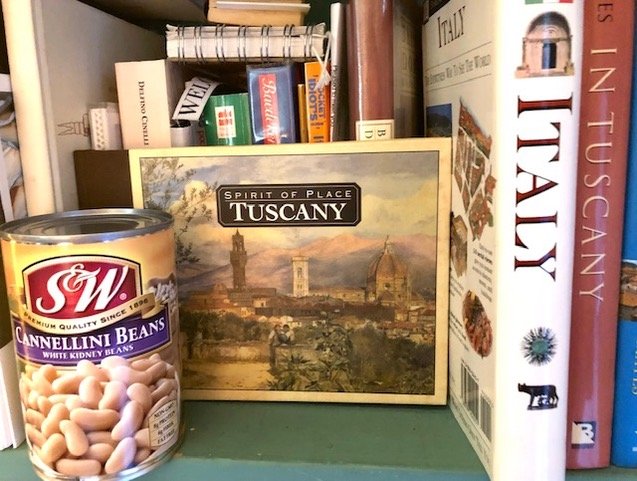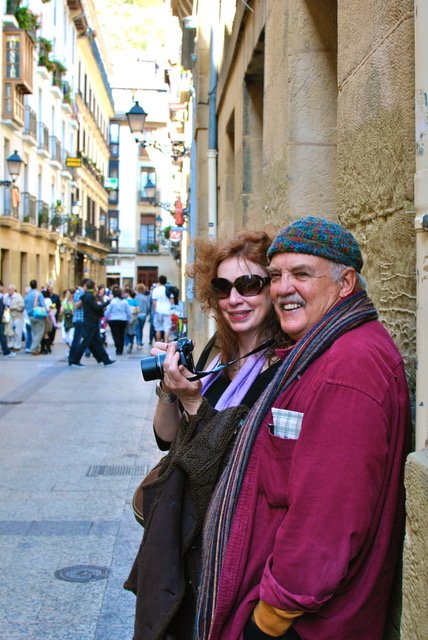The Common Cannellini Bean
One of the simple joys in life is a pot of homemade soup. Winter, spring summer or fall, soup is always a welcome addition to a meal. This first week of February, I came in from a morning of winter gardening in our evolving meditation garden and opened The Soup Bible—an atlas-sized cookbook edited by Debra Mayhew. Turning to the chapter titled “Hearty Lunch and Supper Soups,” I found a simple recipe for a fresh tomato and bean soup. To my delight, it specified not just any bean, but cannellini beans—large white Italian kidney beans about ½ inch long with firm texture and skin and a nutty flavor.
To make this soup, tomatoes—sliced with seeds removed—are added to sautéed onions and crushed garlic. Then add vegetable stock, sun-dried tomato paste, paprika, and cornstarch paste (for thickening) and simmer for 10 minutes. The final ingredient added to the soup is a can of cannellini beans. Garnish soup bowls with chopped cilantro, salt and ground pepper and serve with a slice of crusty ciabatta bread.
Cannellini beans, both canned and dried, are a staple in our pantry. During the 16th century, a period when Catherine de Medici attempted to “refine” Italian cuisine, beans were mainly eaten by the peasant class. Originally cultivated in Argentina by Italian immigrants, cannellini beans eventually made their way to Greece, France, and central Italy. Today, cannellini beans are so popular in Tuscany that the Tuscan people have been nicknamed mangiafagiole, or “bean eaters.”
Today these beans are prized for their nutritious value (high in protein and fiber, iron, magnesium, and folate and low in fat), long shelf life, economic benefits (they double in size when soaked), and their gastronomical versatility. Their creamy texture and nutty flavor make them the perfect addition to salads, soups, stews, and puréed bean spreads. The basic ingredient of minestrone soup is none other than the cannellini bean.
Once hard to find in American markets, fresh cannellini beans are now available—in bulk or canned—at most local grocery and gourmet stores. Fortunately for Kit and me, our friends Pat and Gary in Los Angeles regularly send us dried beans ordered from Rancho Gordo—a New World specialty food company that has led to a revival of interest in heirloom beans with a focus on beans indigenous to the New World.
You can use canned beans, but if you have time, try preparing soups and cassoulets with the dried beans. Before cooking dry cannellini beans, soak them overnight. Drain and rinse them to get rid of excess salt, then add plenty of fresh water to the pot, boil them for 10 minutes (to remove the toxins that can cause gastric distress), reduce the heat and simmer covered for 45 minutes or until tender.
A favorite light lunch of ours can be made by combining cannellini beans and thin slivers of red onion tossed with extra virgin olive oil and seasoned with cracked black pepper and a dash of sea salt. For a no-cook antipasto platter, a can of cooked and drained cannellini beans is a tasty addition along with pitted green or black olives, crumbled feta cheese, marinated artichoke hearts, Italian tuna in oil, sliced cucumbers and fennel bulb, plum tomatoes roasted with olive oil and balsamic vinegar, roasted red peppers, fresh basil, and slices of buffalo mozzarella.
When our nephew Joel arrived recently for a brief visit, I consulted Sam Sifton’s online NYTimes Cooking suggestions for the week and found Sue Li’s “Lemony Shrimp and Bean Stew.” Step 1: Combine lemon zest, paprika, garlic, ¾ teaspoon each of salt and pepper in a medium bowl. Add 1 lb. large shrimp (peeled and deveined) and toss to coat. Step 2: Add shrimp to ½ stick unsalted butter melted in a large pot and cook 2-3 minutes until pink. Transfer to a plate and set aside. Step 3: Add one large onion, minced, and cook until translucent. Add 1 (15)-ounce can cannellini beans and 2 cups chicken or vegetable broth and bring to a boil. Lower heat and simmer 8-10 minutes. Step 4: Stir in shrimp and juices, chopped fresh parsley and 2 tablespoons lemon juice, and season with salt and pepper. Serve with toasted bread.
On trips over the past two plus decades to visit our son and his family in Madrid, I’ve learned so much from watching them cook and sharing meals at their table. In Spain, these same white cannellini beans, called alubias, have their own literary lore. One cold and rainy night in 1923, Hemingway purportedly stopped at a converted Basque farmhouse in Auritz-Burquete—a mountainous town in the Pyrennes region on the Camino de Santiago. “A girl brought in a big bowl of hot vegetable soup and wine,” Hemingway later wrote. “We had fried trout afterward and some sort of stew.”
Reportedly, the Hostal Burquete still serves “Hemingway Soup” along with fried trout and ham. Made with onion, leeks, garlic, ham, alubias (cannellini beans), cabbage, green beans, peas, salt and pepper, this hearty country soup has long won praise and warmed tourists on cold winter nights. Hemingway Soup may find its way to our harvest table this winter, to be shared with neighbors the next time snow visits our region of the Sierra Foothills.



